Structural and Chemical Biology of the Interaction of Cyclooxygenase with Substrates and Non-Steroidal Anti-Inflammatory Drugs
- PMID: 32609495
- PMCID: PMC8253488
- DOI: 10.1021/acs.chemrev.0c00215
Structural and Chemical Biology of the Interaction of Cyclooxygenase with Substrates and Non-Steroidal Anti-Inflammatory Drugs
Abstract
Cyclooxgenases are key enzymes of lipid signaling. They carry out the first step in the production of prostaglandins, important mediators of inflammation, pain, cardiovascular disease, and cancer, and they are the molecular targets for nonsteroidal anti-inflammatory drugs, which are among the oldest and most chemically diverse set of drugs known. Homodimeric proteins that behave as allosterically modulated, functional heterodimers, the cyclooxygenases exhibit complex kinetic behavior, requiring peroxide-dependent activation and undergoing suicide inactivation. Due to their important physiological and pathophysiological roles and keen interest on the part of the pharmaceutical industry, the cyclooxygenases have been the focus of a vast array of structural studies, leading to the publication of over 80 crystal structures of the enzymes in complex with substrates or inhibitors supported by a wealth of functional data generated by site-directed mutation experiments. In this review, we explore the chemical biology of the cyclooxygenases through the lens of this wealth of structural and functional information. We identify key structural features of the cyclooxygenases, break down their active site into regional binding pockets to facilitate comparisons between structures, and explore similarities and differences in the binding modes of the wide variety of ligands (both substrates and inhibitors) that have been characterized in complex with the enzymes. Throughout, we correlate structure with function whenever possible. Finally, we summarize what can and cannot be learned from the currently available structural data and discuss the critical intriguing questions that remain despite the wealth of information that has been amassed in this field.
Conflict of interest statement
The authors declare no competing financial interest.
Figures
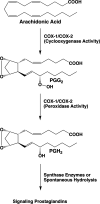
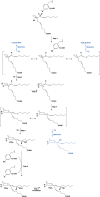

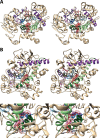
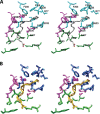
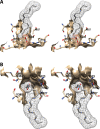
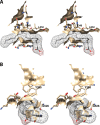
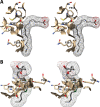

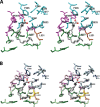




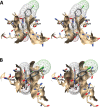

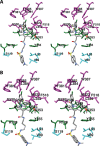
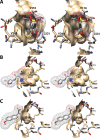

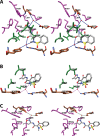


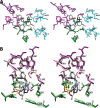
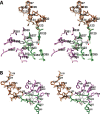
Similar articles
-
Cyclooxygenases: structural, cellular, and molecular biology.Annu Rev Biochem. 2000;69:145-82. doi: 10.1146/annurev.biochem.69.1.145. Annu Rev Biochem. 2000. PMID: 10966456 Review.
-
The structure of mammalian cyclooxygenases.Annu Rev Biophys Biomol Struct. 2003;32:183-206. doi: 10.1146/annurev.biophys.32.110601.141906. Epub 2003 Feb 5. Annu Rev Biophys Biomol Struct. 2003. PMID: 12574066 Review.
-
Human and rat cyclooxygenases are pharmacologically distinct.Adv Exp Med Biol. 1997;407:67-71. doi: 10.1007/978-1-4899-1813-0_10. Adv Exp Med Biol. 1997. PMID: 9321933 No abstract available.
-
Aspirin and inflammation.Nat Struct Biol. 1995 Aug;2(8):605-6. doi: 10.1038/nsb0895-605. Nat Struct Biol. 1995. PMID: 7552717 No abstract available.
-
Design of selective inhibitors of cyclooxygenase-2 as nonulcerogenic anti-inflammatory agents.Curr Opin Chem Biol. 1998 Aug;2(4):482-90. doi: 10.1016/s1367-5931(98)80124-5. Curr Opin Chem Biol. 1998. PMID: 9736921 Review.
Cited by
-
Explore on screening COX-2 inhibitors from the essential oil of Solanum lyratum Thunb. By molecular docking and molecular dynamics simulation.Heliyon. 2024 Sep 7;10(18):e37652. doi: 10.1016/j.heliyon.2024.e37652. eCollection 2024 Sep 30. Heliyon. 2024. PMID: 39309954 Free PMC article.
-
Protective Effects of Caesalpinia sappan Linn. and Its Bioactive Compounds on Cardiovascular Organs.Front Pharmacol. 2021 Sep 15;12:725745. doi: 10.3389/fphar.2021.725745. eCollection 2021. Front Pharmacol. 2021. PMID: 34603037 Free PMC article. Review.
-
Magic shotgun approach to anti-inflammatory pharmacotherapy: Synthesis of novel thienopyrimidine monomers/heterodimer as dual COX-2 and 15-LOX inhibitors endowed with potent antioxidant activity.Eur J Med Chem. 2023 Nov 15;260:115724. doi: 10.1016/j.ejmech.2023.115724. Epub 2023 Aug 15. Eur J Med Chem. 2023. PMID: 37611534 Free PMC article.
-
Fluorine-18 Labelled Radioligands for PET Imaging of Cyclooxygenase-2.Molecules. 2022 Jun 9;27(12):3722. doi: 10.3390/molecules27123722. Molecules. 2022. PMID: 35744851 Free PMC article. Review.
-
Stability Analysis of the Asiatic Acid-COX-2 Complex Using 100 ns Molecular Dynamic Simulations and Its Selectivity against COX-2 as a Potential Anti-Inflammatory Candidate.Molecules. 2023 Apr 27;28(9):3762. doi: 10.3390/molecules28093762. Molecules. 2023. PMID: 37175172 Free PMC article.
References
-
- Smith W. Molecular Biology of Prostanoid Biosynthetic Enzymes and Receptors. Adv. Exp. Med. Biol. 1997, 400B, 989–1011. - PubMed
Publication types
MeSH terms
Substances
Grants and funding
LinkOut - more resources
Full Text Sources

